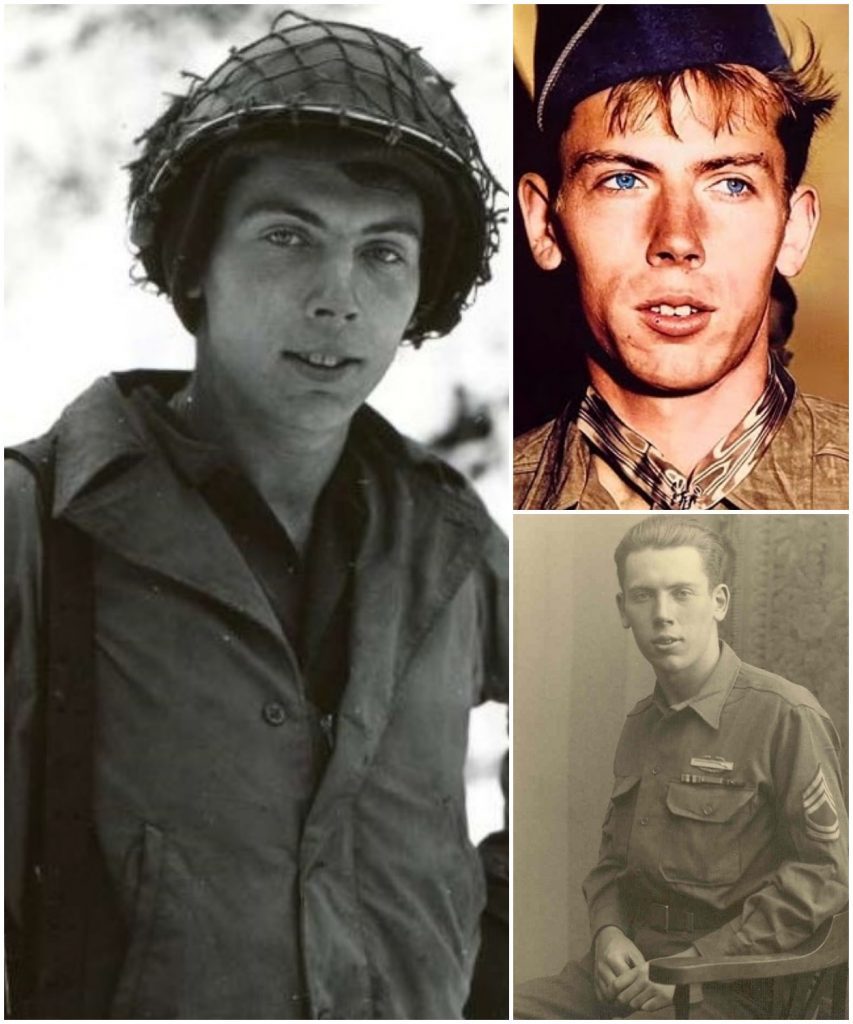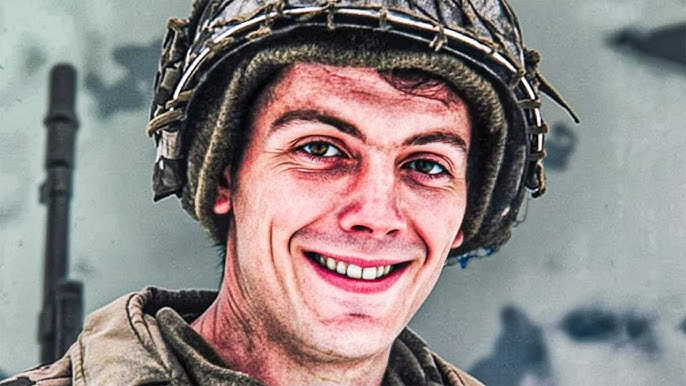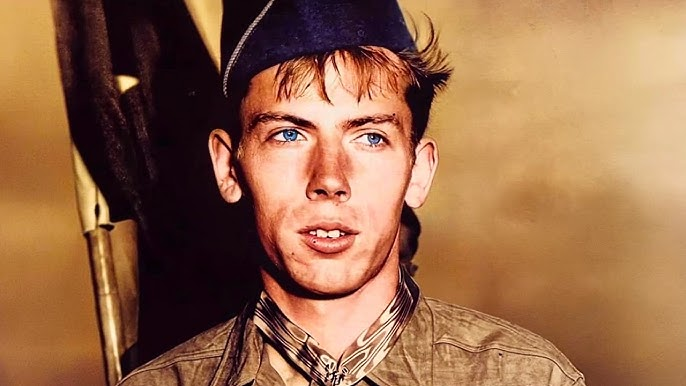Why Francis Sherman Currey Was the Scariest Soldier of World War II
In the freezing chaos of December 1944, deep in the Ardennes forest, one young American soldier would etch his name into military legend. Private Francis Sherman Currey, barely 19 years old, stood at the heart of the Battle of the Bulge—one of the bloodiest confrontations of World War II.
Outnumbered, outgunned, and facing the relentless advance of German forces, Currey didn’t retreat. Instead, he turned fear into firepower, transforming himself into a one-man army whose courage would terrify his enemies and inspire his allies.

This is the story of how Francis Sherman Currey became one of the most feared and respected soldiers of the war—and why his legacy still sends chills down history’s spine.
The Frozen Hell of the Battle of the Bulge
The winter of 1944 was brutal. Nazi Germany, desperate for a last-ditch victory, launched a surprise offensive through Belgium’s Ardennes region. Their goal was to split Allied forces and capture Antwerp, hoping to force a peace negotiation.
What followed was a nightmare of snow, blood, and chaos. The Battle of the Bulge became the largest and costliest battle ever fought by American troops. Entire units were surrounded. Supplies ran low. Temperatures plunged below freezing.
And in the middle of this mayhem was a young soldier from New York—Francis Currey—serving with the 30th Infantry Division near Malmedy, Belgium. The Germans had tanks, machine guns, and the advantage of surprise. Currey had his rifle, his instincts, and the unshakable resolve of someone who refused to die quietly.
Video : Why Francis Sherman Currey Was The Scariest Soldier of WW2
One Man Against an Army: Currey’s Defiant Stand
On December 21, 1944, the Germans attacked Currey’s position near the town of Malmedy. Their tanks rolled through the snow, crushing everything in their path. Many soldiers would have fallen back—but not Currey.
He saw five fellow soldiers trapped in a building, surrounded by enemy fire. He didn’t hesitate. Running through bullets and explosions, he grabbed a bazooka and charged forward. With precise aim, he destroyed a German tank, sending it up in flames.
Then, switching to a machine gun, he cut down advancing infantry, buying his comrades precious time. When the enemy regrouped, Currey didn’t flinch. He crawled across open ground, under relentless fire, using anti-tank grenades and rifles to keep them at bay.
By the end of the fight, he had single-handedly disabled multiple tanks, eliminated dozens of enemy troops, and rescued his pinned-down brothers-in-arms. It wasn’t just bravery—it was sheer dominance.
The Fear He Inspired on the Battlefield
German troops soon learned to recognize the young American who refused to back down. Witnesses said Currey’s fearlessness rattled even hardened veterans of the Waffen-SS. His precision, speed, and calculated aggression made him seem almost supernatural amid the chaos.
Imagine the scene: a snow-covered Belgian town echoing with gunfire, smoke swirling through icy air, and one lone soldier advancing, weapon after weapon in hand, dismantling the German assault.
It was as if he had become the embodiment of American defiance. His actions turned the tide of the skirmish and disrupted a German attack that could have cost countless lives.

That day, Francis Currey earned a reputation—the scariest soldier on the battlefield.
Recognition of a Reluctant Hero
After the smoke cleared, the full scope of Currey’s courage came to light. His commanding officers nominated him for the Medal of Honor, the highest military award for valor in the United States.
The citation detailed his extraordinary acts—destroying tanks, saving his comrades, and holding off superior forces almost entirely alone.
At just nineteen, Currey became one of the youngest soldiers ever to receive the Medal of Honor. He also earned the Silver Star, Bronze Star, and Purple Heart. Yet despite the accolades, Currey never boasted about his heroism.
He once said, “I just did what needed to be done. They were my friends. I couldn’t let them die.” That humility only made his legend grow stronger.
Life After the Battlefield
When the war ended, Currey returned home to a quieter life—but the shadows of battle followed him. Like many veterans, he carried the weight of what he’d seen and done.
He worked for decades at the Veterans Administration, dedicating his life to helping other servicemen and women. Those who knew him described him as kind, humble, and fiercely loyal—the same qualities that had defined his actions under fire.

He rarely spoke about his wartime experience, yet his story inspired generations of soldiers. To them, he wasn’t just a hero—he was a reminder that true courage comes from compassion, not glory.
When he passed away in 2019, he was 94 years old, and the nation mourned the loss of one of its greatest warriors.
A Legacy Carved in Courage
Francis Sherman Currey’s story isn’t just about one man’s heroism—it’s about what happens when ordinary people rise to meet extraordinary moments.
He didn’t fight for medals. He fought for his brothers beside him, for the idea that one soldier’s bravery could change everything. And he proved it—on that frozen Belgian road where fear met fury and lost.
Even now, military historians and veterans speak of Currey with awe. His Medal of Honor display remains a symbol of what it means to stand unflinching when the world falls apart.
Why He Was the Scariest Soldier of World War II
So, what made Francis Sherman Currey the “scariest” soldier of the war? It wasn’t ruthlessness—it was resolve. He fought with precision, intelligence, and an intensity that unnerved his enemies.
Video : Francis Sherman Currey Was The Scariest Soldier of WW2 —And Here’s Why
He embodied the terrifying power of a soldier who simply refuses to quit. Every move he made on that battlefield was calculated, deliberate, and unstoppable. His courage became contagious, fueling those around him to fight harder and hold the line.
Currey didn’t just survive the war—he defined what it meant to be fearless in it.
Conclusion: The Man Who Stared Down Fear Itself
Francis Sherman Currey’s story stands as one of World War II’s most powerful reminders of what true heroism looks like. He was young, scared, and human—but he didn’t let fear control him. Instead, he turned it into action.
When others would have fallen back, he stood tall. When defeat seemed certain, he created hope. And when history called, he answered with courage that still echoes across generations.
He may have been the “scariest soldier” to his enemies, but to his comrades and country, Francis Sherman Currey was—and remains—the very definition of a hero.